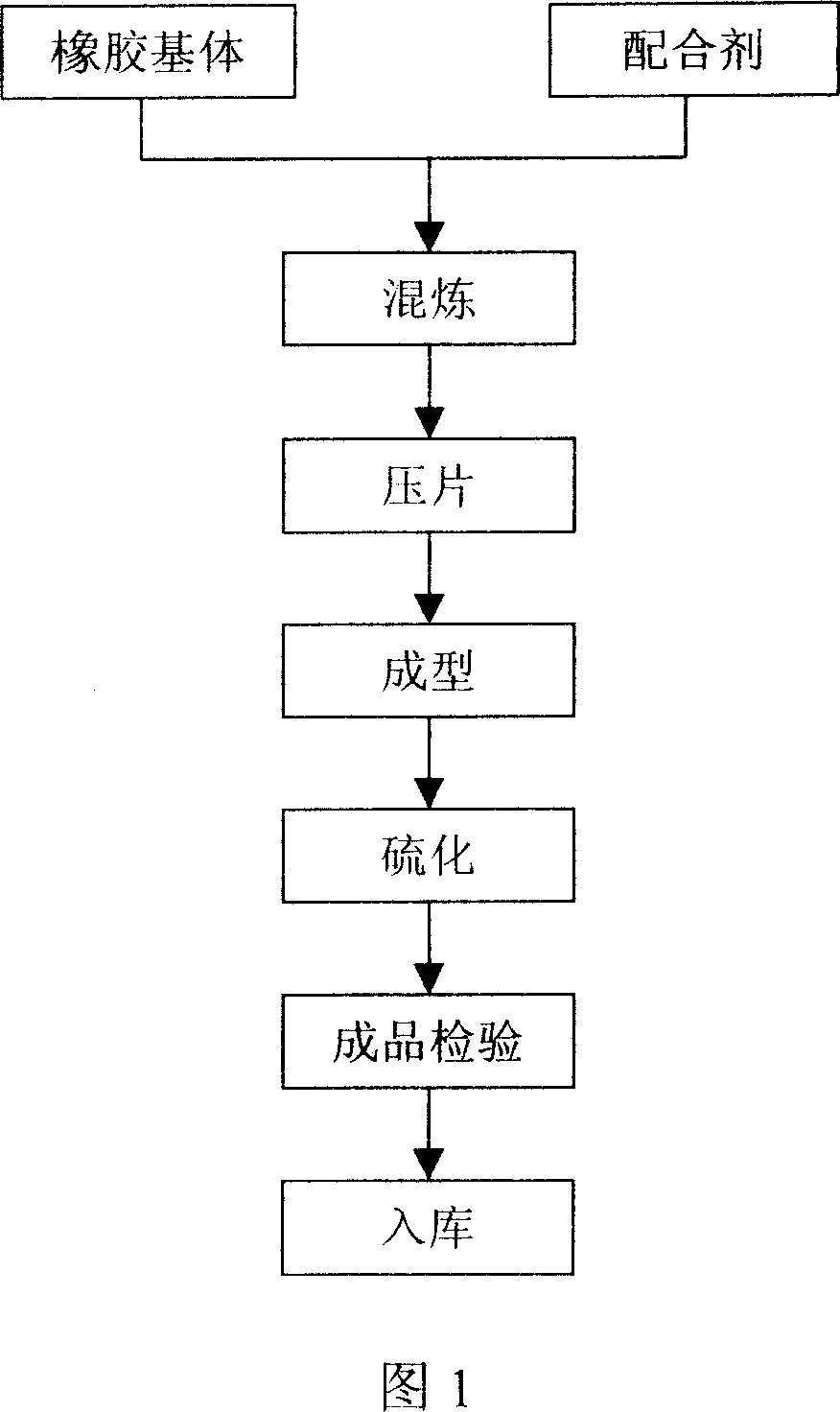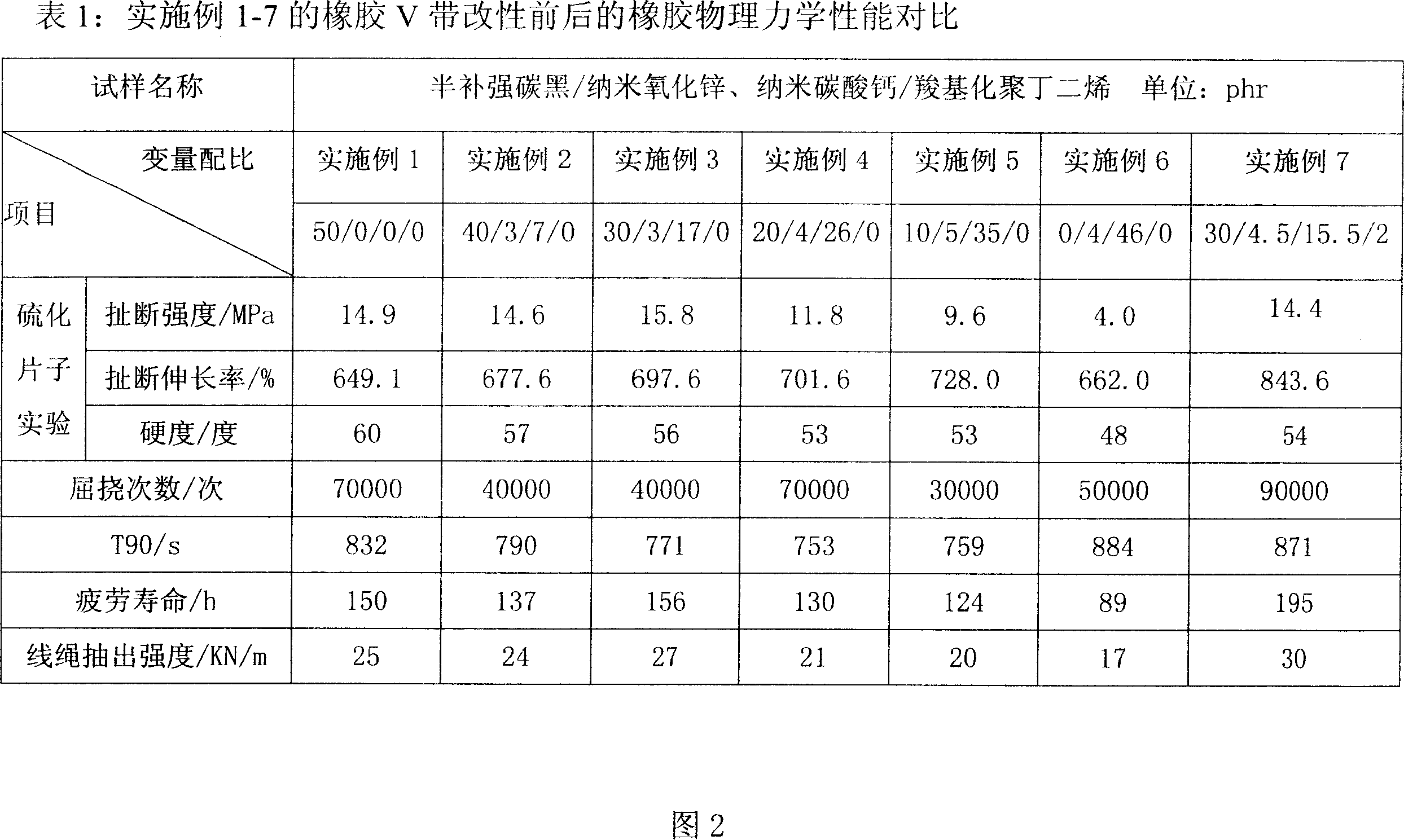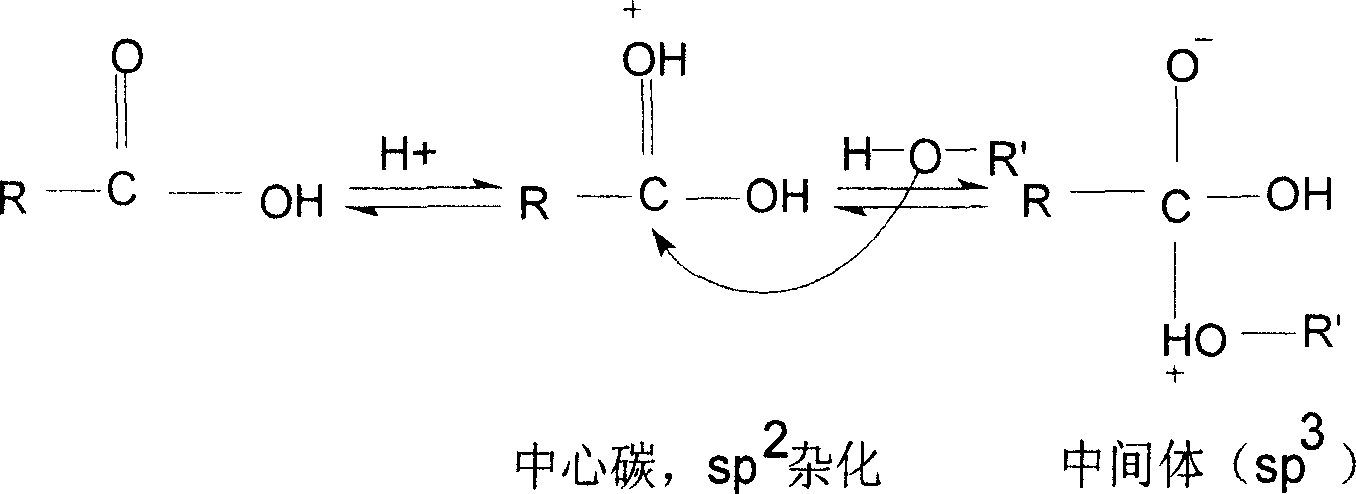Nano material modified rubber V strip
A technology for modifying rubber and nanomaterials, applied in the field of nanomaterial modified rubber V-belts and their manufacturing, to achieve the effects of improved compression set and tear performance, improved finished product performance, and reasonable design
- Summary
- Abstract
- Description
- Claims
- Application Information
AI Technical Summary
Problems solved by technology
Method used
Image
Examples
Embodiment 1
[0036] In the present embodiment, the selected main raw material, compounding agent and formula ratio thereof are as follows:
[0037] In parts by mass, rubber matrix: 100; sulfur: 2.0; accelerator: 0.8; stearic acid: 1.5; antioxidant: 2.0; carbon black: 50.0; coumarone: 3.0; pine tar: 5.0.
[0038] First carry out the rubber mixing process, first add the rubber matrix, and then select sulfur, accelerator, stearic acid, anti-aging agent, carbon black and softener in batches according to the conventional mixing process for mixing, and then roll out the sheet and shape it , vulcanization, make the rubber V-belt of the present invention.
Embodiment 2
[0040] In the present embodiment, the selected main raw material, compounding agent and formula ratio thereof are as follows:
[0041] In parts by mass, rubber matrix: 100; sulfur: 2.0; accelerator: 0.8; nano-zinc oxide: 3.0; stearic acid: 1.5; antioxidant: 2.0; carbon black: 40.0; nano-calcium carbonate: 7.0; coumarone: 3.0; Pine Tar: 5.0.
[0042] First carry out the rubber mixing process, first add the rubber matrix, then add nano-zinc oxide, nano-calcium carbonate, and then select sulfur, accelerator, stearic acid, anti-aging agent, carbon black and softener in batches according to the conventional mixing process. Mixing, calendering, molding, and vulcanization to obtain the rubber V-belt of the present invention.
Embodiment 3
[0044] In the present embodiment, the selected main raw material, compounding agent and formula ratio thereof are as follows:
[0045] In parts by mass, rubber matrix: 100; sulfur: 2.0; accelerator: 0.8; nano-zinc oxide: 3.0; stearic acid: 1.5; antioxidant: 2; carbon black: 30.0; nano-calcium carbonate: 17.0; coumarone: 3.0; Pine Tar: 5.0.
[0046] Process step is with embodiment 2.
PUM
 Login to View More
Login to View More Abstract
Description
Claims
Application Information
 Login to View More
Login to View More - R&D
- Intellectual Property
- Life Sciences
- Materials
- Tech Scout
- Unparalleled Data Quality
- Higher Quality Content
- 60% Fewer Hallucinations
Browse by: Latest US Patents, China's latest patents, Technical Efficacy Thesaurus, Application Domain, Technology Topic, Popular Technical Reports.
© 2025 PatSnap. All rights reserved.Legal|Privacy policy|Modern Slavery Act Transparency Statement|Sitemap|About US| Contact US: help@patsnap.com



